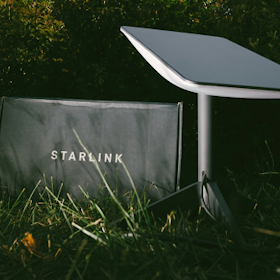American broadband customers will soon have a helpful tool when shopping for new internet plans. The Federal Communications Commission (the U.S. equivalent of the CRTC) is requiring all internet service providers operating in the U.S. to include standardized labels with their plans to improve transparency and simplify provider-to-provider comparisons.
It’s a step in the right direction for an industry that’s long been prone to hidden fees and deceptive marketing. It’s also left us wondering why the same isn’t being required in Canada.
In the past few years, the CRTC has pledged its commitment to consumers, promising to increase competition and lower prices in the Canadian telecom market. The initiative has had some success, with significant improvements for mobile and high-speed internet plans. Broadband labels like the ones now required in the U.S. could continue that process by offering consumers helpful information in a simple, recognizable format.
Let’s take a look at the U.S. labels and analyze how the CRTC could improve on them with their own campaign.
U.S. broadband nutrition labels
The U.S. broadband nutrition labels were initially proposed in the FCC’s 2015 Open Internet Order as a straightforward and standardized way for consumers to distinguish the many internet plans offered by various ISPs. In 2016, the Commission drafted some preliminary labels, modeled after the black-and-white tables found on packaged foods. The requirement, however, was not mandated until President Biden’s 2021 Infrastructure Investment and Jobs Act. The Infrastructure Act required the FCC to adopt regulations within the following year and hold public hearings to inform consumers and seek commentary.
The subsequent FCC regulations require that internet service providers create and include the nutritional labels at every point-of-sale, including online, in-person, and third-party retailers. Major ISPs (those with over 100,000 subscribers) must provide labels by April 10, 2024. Smaller ISPs (those with under 100,000 subscribers) have until October 10, 2024.
Contents

Source:FCC
The “Broadband Facts” will include a number of plan details, including the monthly price, additional charges, and typical speeds, along with links to network management and privacy policies. For the most part, these things are already readily available from ISPs, but the FCC’s intent is to organize them in one place in a form that’s already recognized and trusted by consumers.
Beyond the design, there’s one crucial distinction with the nutrition label requirements and the plan details ISPs usually provide: the word “typical.” Most ISPs advertise their top download and upload speeds, even if those speeds aren’t the norm for most customers. But the “Broadband Facts” label asks every ISP to provide typical download speed, upload speed, and latency. That means customers will get a more accurate picture of a user experience rather than a picture of the plan’s potential.
Why not Canada?
Both consumers and telecom experts say the same thing: internet in Canada is still too expensive, despite the CRTC’s efforts. But there’s still more that the CRTC can do to help customers better navigate the market and, in turn, engender more competition. One of the simplest would be mandating broadband nutrition labels for Canada.
The Internet Code in action
In 2020, the CRTC established a code of conduct for ISPs called the Internet Code. The purpose of the Code was to force providers to offer easier-to-understand information and greater flexibility for customers. That legislation led to positive improvements for customers, though the Code itself was still a bit dense: “The Internet Code, simplified,” a skeleton key of the policy posted by the CRTC, runs over 5,000 words.
Broadband nutrition labels would require ISPs to whittle the most important information down to its essence, cutting through the legalese and fluffy sales-speak. More importantly, they’d be highly visible (and highly readable) at the point-of-sale.
Learning from the U.S.

Source:Google
While we recommend using the FCC labels as a model, we think there are a few ways the CRTC could improve upon them. The FCC’s current requirements ask ISPs to create their own labels and, in the process, give the providers a lot of autonomy. That might be a necessary evil considering the sheer amount of ISPs in the country, but we fear it could lead to some problems, especially in accuracy.
For example, the FCC asks ISPs to determine their own “typical” speeds by using “internal testing, consumer speed test data, or other data regarding network performance, including reliable, relevant data from thirdparty sources.” Whether or not those self-reported speeds will be routinely audited is unclear. If the CRTC were to roll out their own broadband labels, we’d like to see a formal auditing process in place so consumers can trust the speeds they’re seeing on the label are what they’re likely to see at home.
Another downside of ISP autonomy is that they can mimic some of the empty language of their advertising. The Google Fiber nutrition label includes phrases like “everyday low pricing” and “no tricks or gimmicks” in the “Ingredients Summary.” While that kind of language might be expected from any company trying to sell a service, it doesn’t do much for consumers. If the CRTC were to require nutrition labels, we’d urge them to forbid ISPs from writing their own descriptions of service, limiting them to a list of tags to describe their internet plans.
Most importantly, we’d urge the CRTC to also require nutrition labels for TV and mobility providers. Canadians pay some of the highest cell phone bills in the world. As a result, they’re immensely dissatisfied with the country’s cell phone carriers. If you read enough Reddit posts, you’ll also find plenty of people arguing things will never get better.
Nutrition labels aren’t a cure-all, but they’re a step towards more transparency, more accountability, and, hopefully, more consumer trust.
Related Articles
Find Better Internet and Phone Plans
Hundreds of internet plans unpacked. All the facts. No surprises.
Internet Providers by Provinces and Territories
- Internet in Alberta
- Internet in British Columbia
- Internet in Manitoba
- Internet in New Brunswick
- Internet in Newfoundland and Labrador
- Internet in Northwest Territories
- Internet in Nova Scotia
- Internet in Nunavut
- Internet in Ontario
- Internet in Prince Edward Island
- Internet in Quebec
- Internet in Saskatchewan
- Internet in Yukon Territory





























